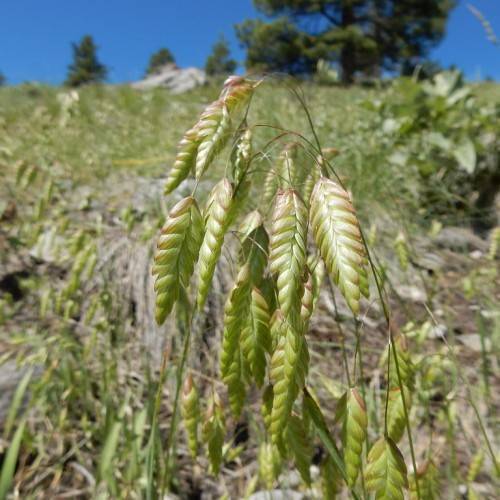
Cheatgrass
Bromus tectorum
Also Known As - Downy ChessWatering:
Minimal
Hardiness Zone:
Sun:
full sun,part shade
Leaf:
Yes
Growth Rate:
Low
Drought Tolerant:
Yes
Salt Tolerant:
Yes
Invasive:
Yes
Care Level:
Medium
watering
Watering for Poverty Brome (Bromus sterilis) should be done a few times a week. Aim for a total of 1-2 inches per week, either through rainfall or supplemental watering. Water deeply, but avoid saturating the soil. Allow the top inch of soil to dry between waterings. During the hottest summer months, especially if there is no rain, supplemental watering may be necessary. Water in the morning to give the plant adequate time to dry before dusk.
sunlight
Poverty Brome (Bromus sterilis) is a cool-season grass that grows best in full sun. It prefers light, well-drained soils and requires plenty of water during the warm summer months. It also needs good air circulation to avoid disease and pest damage. During spring, poverty brome should be exposed to a minimum of 6 hours of sunlight a day, with 8 to 12 hours being optimal. In the summer, poverty brome should receive full sun to allow it to reach its full potential. During autumn, the amount of light exposure can be decreased slowly to about 4 to 6 hours a day, although some protection from the sun during the hottest parts of the day is beneficial.
pruning
Poverty Brome (Bromus sterilis) is a species of perennial grass that is well adapted to dry conditions and drought. Pruning of this plant species should be done in early spring, before new growth starts to appear. Pruning should be limited to about 1/4 - 1/3 of the plant, as too much pruning can damage the plant and lead to deterioration. Removing dead and yellowing or brown leaves is important to promote healthier, greener growth on the plant as well as to increase air circulation. When pruning to reduce the height of the plant, it is important to avoid cutting too close to the base of the stem as this could cause the plant to become unstable and eventually topple over.
